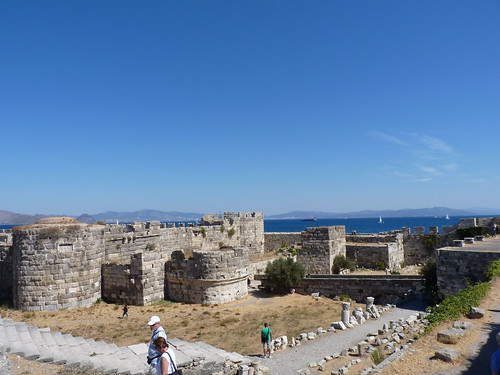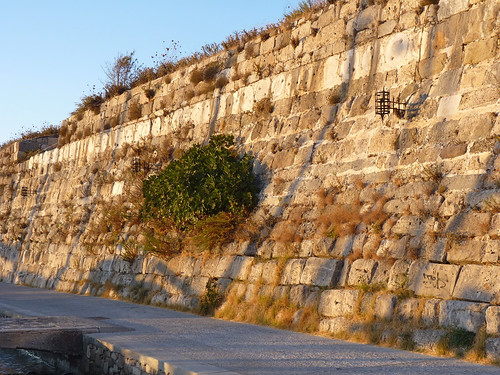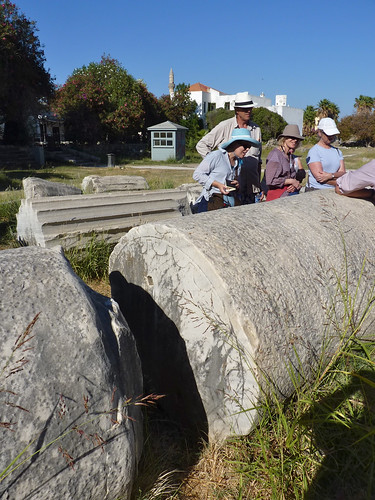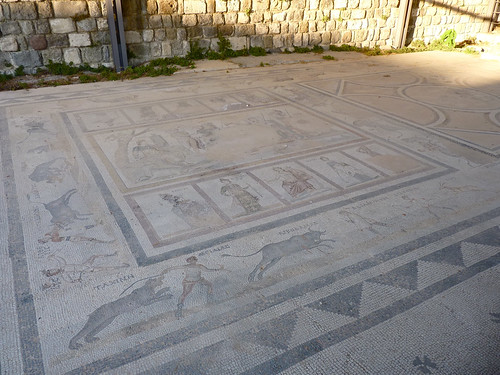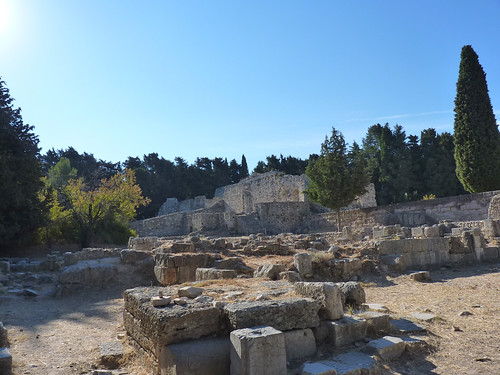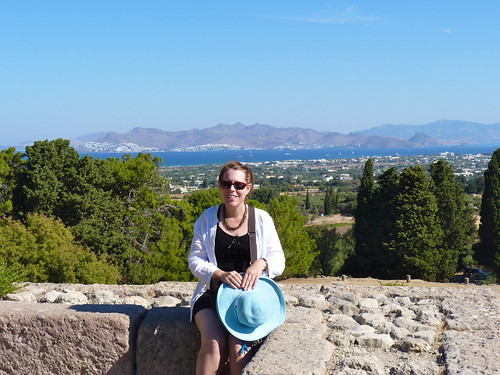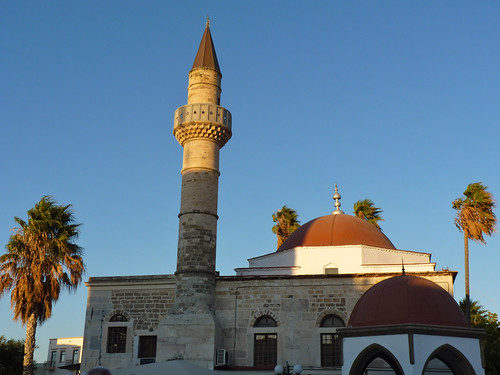The first island we visited on our South Aegean archeological tour was Kos.
Only two miles from the Turkish coast, the city of Kos is defined by the giant fortress in the harbor. Built by the Knights of St. John of Rhodes, the fourteenth-century fortress was created in multiple iterations, responding to changes in military technology. Thus, the strongest and thickest walls–capable of withstanding cannon fire–are on the outside.
We walked through the fortress and along the huge bastions overlooking the harbor, and our guide Heinrich showed us many examples of spoilia, the re-use of building materials and sculpture from an earlier age. With ruins from the Hellenistic, Roman, Byzantine, and Ottoman empires, it certainly makes sense that a settlement like Kos would feature recycled materials.
Here, we see a fairly obvious example of spoilia: round marble cross-sections of column drums are embedded into the fortress wall facing the harbor.
We explored a ruin in the very center of Kos and found out how the Greek and Roman builders made their fluted columns. The ancient builders transported the columns to the site in big round drums, then they carved the fluting in situ. In the foreground, you can see the fluting patterns etched onto the end of the round column drum.
In the middle of the city, we also found a beautifully excavated Odeon, restored and in use once more, after more than a thousand years. It would have been glorious to hear music there, but we were content with just seeing the ruins. (When I was a little girl, my family once attended a musical performance in an old Roman theater. We were so lucky to experience that!) Whereas the Greek theater we saw later at Knidos was embedded into the side of a hill, this Roman Odeon was built up on a foundation and had corridors running underneath it.
The Romans loved intricate mosaics. This mosaic has gladiators fighting animals on the outside panels, various Muses in the middle panels, and a young man consulting with three goddesses in the center. One of the goddesses holds an apple, so it must be “The Judgment of Paris.”
The Island of Kos is home to Hippocrates, father of modern medicine. (Hippocrates was way ahead of his time, taking patient histories and doing holistic treatments and telling people to boil their water over two thousand years ago.) Perhaps because of Hippocrates’ fame, the healing shrine of the god Asclepeion on Kos became legendary, producing some of the finest and most renowned physician/priests in the ancient world.
We visited the shrine, located high above the city of Kos. Pilgrims and patients would come from all over the Greek world to stay here, reporting their dreams to the priests of Asclepius, who would then prescribe treatments. Offerings would be burnt at the altar, shown below. The ancient Greeks believed that burning an animal in the presence of the god honored the deity–the god would ingest the smoke, while the humans shared the meat.
Made of white marble and visible from the sea, the Asclepeion must have been a marvel to see in ancient days.
I know I’ve barely scratched the surface of the archeology and architecture on this island, but I wanted to mention a few things about the modern city of Kos. The main square is filled with stark, minimalist architecture, courtesy of the Italians, who took over the island from the Ottomans in 1912. The Italians did leave this minaret in place in the central square, perhaps as a nod to history. But despite the island’s close proximity to Turkey, the Muslim population of Kos is now quite small, one of the lasting results of the 1923 transfer of population between Greece and Turkey.
